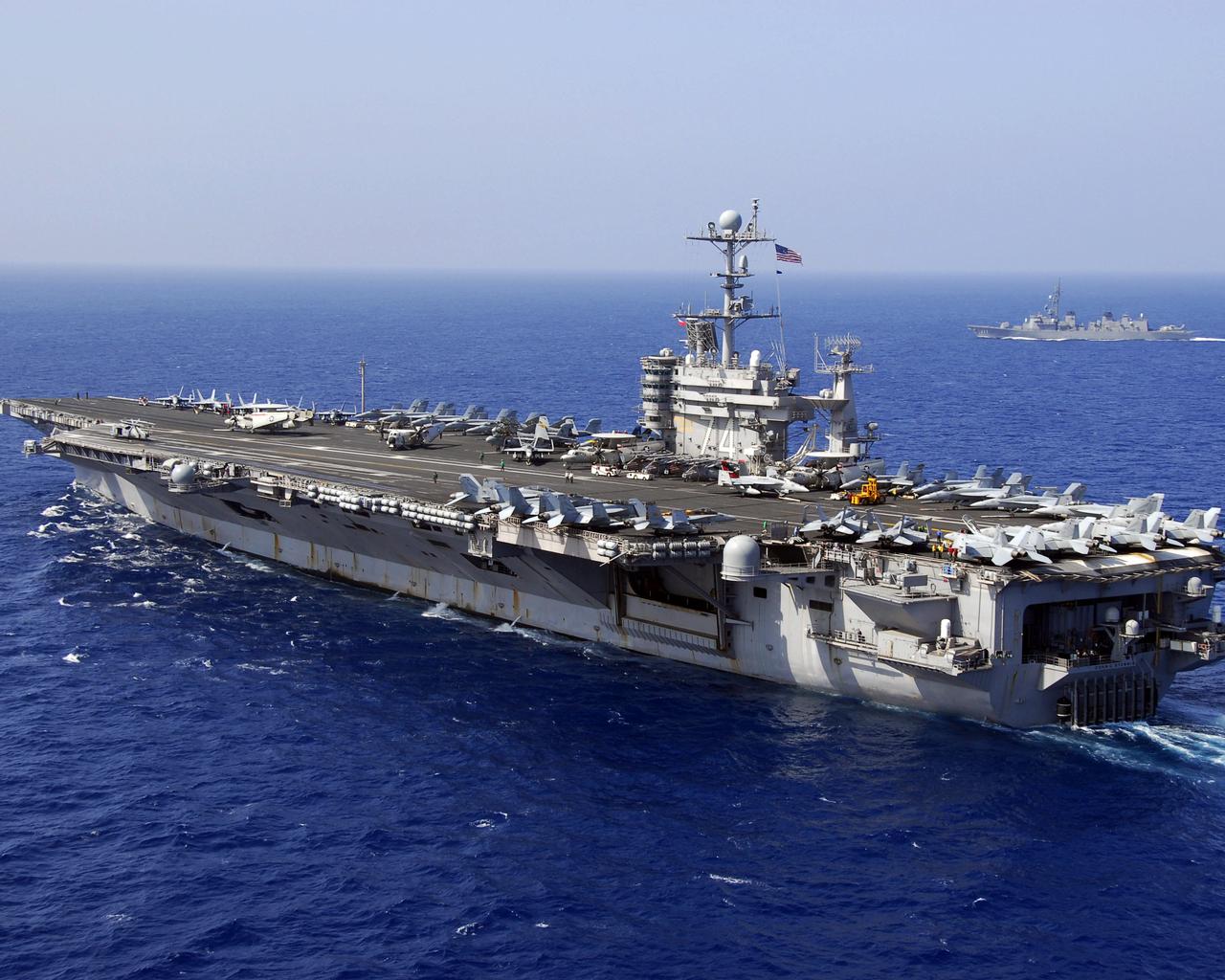Tension mounts in South China Sea as US aircraft carrier strike group patrols disputed waters, testing Beijing's nerve
- The USS John S Stennis has in the South China Sea since March 1


- It has been joined by four other ships, including guided-missile destroyers
- The US claims that it is a regular deployment, but it appears to be the latest attempt by the US to reclaim international waters from China
- China now claims almost all of the South China Sea
- Chinese spokespeople say the US is 'militarizing' the area, not China [...really!]
The US has sent an aircraft carrier and a number of other ships through disputed waters in the South China Sea, it announced yesterday — a move that will necessarily raise tensions with Beijing, which has been engaging in an increasingly militaristic power-play in the area over the past few years.
The countries of The South China Sea have long claimed rights to disputed international waters, but as its economic strength has grown, an increasingly confident China has seen fit to flex its muscles by building military bases on artificial islands and militarizing one of the disputed Paracel Islands. It now claims almost all of the China Sea as its territory.
That has forced the US to send ships through the disputed waters to reaffirm their international status, most recently with a missile destroyer, the USS Curtis Wilbur, having sailed past the Paracels in January. But this latest move — a full aircraft carrier strike group led by the Nimitz-class USS John S Stennis — is the US's boldest yet.

The Navy's Seventh Fleet announced Friday that the Stennis had passed through the Luzon Strait between the Philippines and Taiwan on March 1, and had been operating in the South China Sea since then.
It was accompanied by the guided-missile destroyers USS Chung-Hoon and USS Stockdale, the guided-missile cruiser USS Mobile Bay and the supply ship USNS Rainier.
And they're not alone — Beijing has sent a number of Chinese ships to 'watch' the US group. 'We have Chinese ships around us that we normally didn't see in my past experience,' Captain Greg Huffman, the Stennis's commanding officer, said in a Navy press release.
He was last deployed to the South China Sea in 2007.
Officially, the release says, this is a routine mission. There is no direct statement of intent with regard to maintaining the status of international waters.
However, it also mentions the January deployment of the Curtis Wilbur, which was described at the time as an operation 'to challenge excessive maritime claims of parties that claim the Paracel Islands,' and that the US would 'fly, sail and operate wherever international law allows.'
Beijing denounced that deployment as being 'in violation of relevant Chinese laws,' saying the US 'entered China's territorial waters without authorization.'

Speaking through Chinese state press agency Xinhua, spokesperson Fu Ying said that America was to blame for militarization in the area, not China.
'Some reports try to blame China for affecting freedom of navigation and undermining the stability of this region,' she said. “Such practice misrepresents the situation.
'Talking about militarization, if we look at those advanced ships and aircraft going in and out of the South China Sea, aren’t most of them are from the US? The US has deployed as much as 70 percent of its naval forces to Asia. Defense ability is not equivalent to militarization.
'If the US is really interested in upholding peace and stability in the region, it should support China’s efforts to seek negotiated solutions to disputes with its neighbors, instead of taking the opposite way.'
Fu was speaking 'as an ordinary Chinese,' the report said.
In September 2015, China showcased a range of heavy-duty armaments in a parade to commemorate the end of the Second World War.
These included the DF-21D anti-ship ballistic missiles, which China claims can potentially sink a US Nimitz-class aircraft carrier like the John C Stennis in one strike.
The South China Sea is home to a host of disputes among those that occupy it, including China, Taiwan, Vietnam, the Philippines, Malaysia and Brunei.
China claims almost the entire South China Sea and its islands, reefs and atolls on historic grounds. The area has some of the world's busiest shipping lanes, and US officials say ensuring freedom of navigation is in US national interests, while not taking sides in the territorial disputes.
Two of the most hotly contested areas are the Spratly Islands — which lie close to Brunei and the Philippines — and the Paracel island chain, which lies closer to China and Taiwan.
The Spratly Islands (called the Nansha Islands by China) are now claimed by Brunei, China, Malaysia, the Philippines, Taiwan and Vietnam.
China was actually the last to build on the Spratlys when it did so in the late 1980s, having been beaten to the punch by Taiwan during the Second World War, which was followed shortly afterwards by the Philippines, Vietnam and Malaysia.
But in 2014 China sparked concern when it began dredging operation near three reefs, and has since reclaimed 2,000 acres, CNN wrote.
The Paracels, on the other hand, are largely a dispute between China and Vietnam. In 2015, China built oil rigs near the area, causing Vietnam to respond by sending out fishing vessels and navy boats. At least one fishing vessel was sunk.
No comments:
Post a Comment
Comments always welcome!